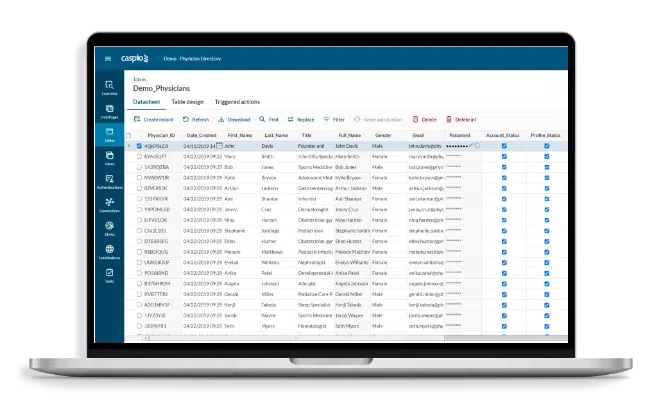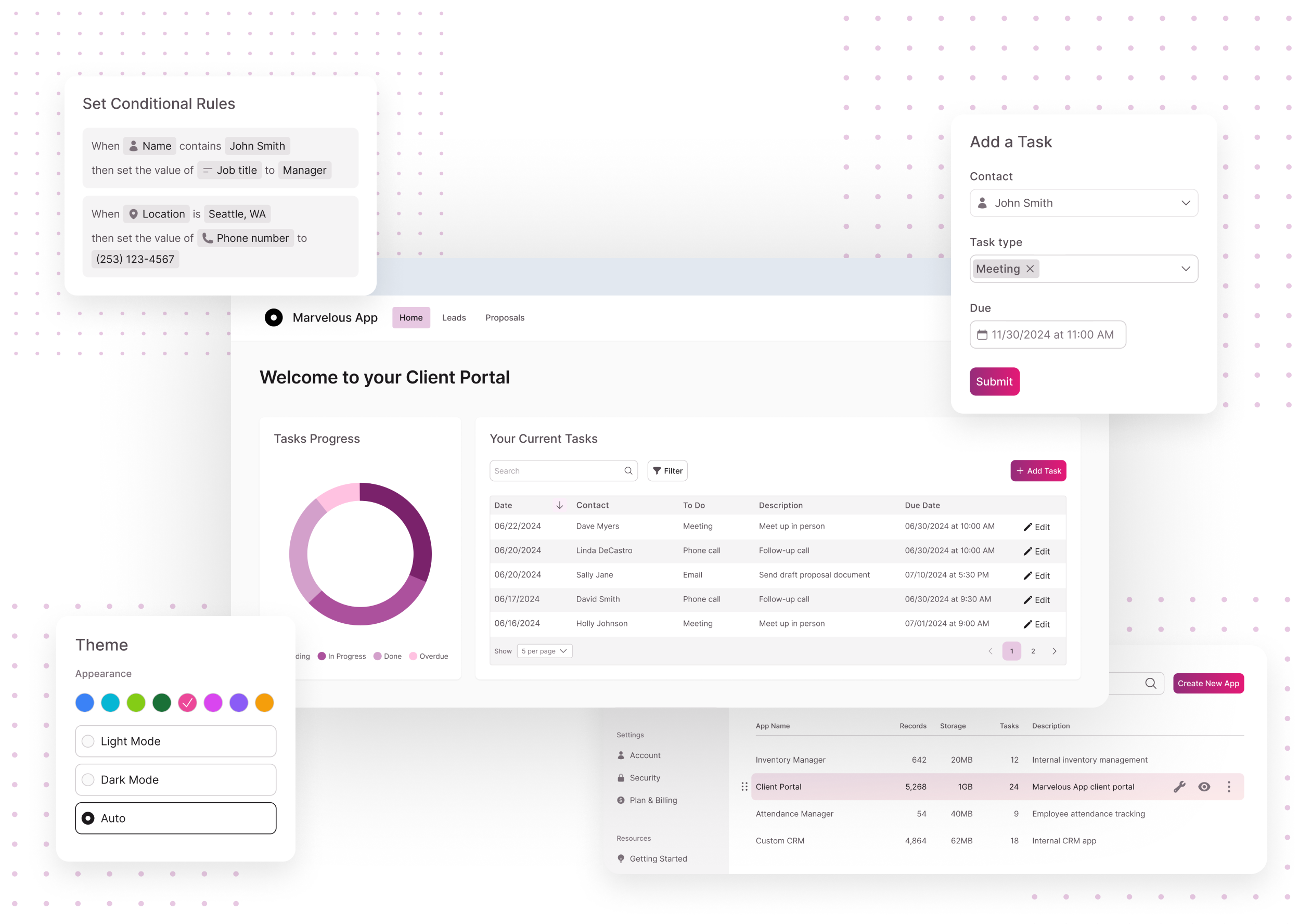No-Code Operating Systems for Open Platform Data Source Creation: Conserve Time and Resources
No-Code Operating Systems for Open Platform Data Source Creation: Conserve Time and Resources
Blog Article
Exploring the Benefits of Scalable Databases That Require No Coding Abilities for Efficient Data Management Solutions
The introduction of scalable databases that get rid of the need for coding skills offers a transformative chance for companies looking for efficient information management remedies. As we take into consideration the effects of such improvements, it becomes vital to examine just how they can improve the landscape of data management and drive sustainable growth in a competitive environment.
Enhanced Availability for Users
Improved access for users is an essential element of scalable databases, making certain that data management systems are easy to use and intuitive. In an age where data-driven decisions are vital, availability enables a bigger variety of customers, consisting of those without substantial technological expertise, to involve with data source systems successfully. This democratization of data accessibility helps with enhanced cooperation across departments, empowering employees to make and remove understandings notified decisions.
Straightforward interfaces, such as drag-and-drop features and visual data representation, simplify complicated data interactions. These improvements lower the understanding curve connected with conventional database administration, enabling users to focus on leveraging data as opposed to grappling with technical complexities. Furthermore, scalable data sources often integrate adjustable control panels and real-time analytics, offering customers with immediate understandings customized to their specific needs.

Cost-Effectiveness and Source Savings
Efficient data management not just pivots on access yet likewise on cost-effectiveness and source cost savings. Scalable databases developed for individuals with no coding skills significantly decrease financial worries normally connected with typical database management systems. By getting rid of the requirement for specialized programs experience, organizations can assign their resources extra efficiently, focusing funds on core business tasks as opposed to comprehensive training or employing experienced employees.
Moreover, these databases typically make use of cloud-based remedies, which further decrease expenses connected to hardware and maintenance. Organizations can scale their data source options according to their needs, preventing the costs incurred from over-provisioning sources. This versatility indicates companies can adjust to altering needs without incurring unnecessary expenses, bring about significant long-term financial savings.
Additionally, user-friendly interfaces enhance data access and monitoring processes, lowering the time spent on administrative jobs. This effectiveness equates into labor expense savings, permitting groups to concentrate on critical initiatives as opposed to regular maintenance. On the whole, adopting scalable data sources that require no coding abilities fosters an extra economical strategy to information monitoring, making it possible for organizations to optimize their sources while keeping high degrees of operational performance.
Improved Cooperation Throughout Teams

Moreover, scalable databases facilitate seamless interaction amongst staff member. With user-friendly user interfaces that require no coding abilities, employees can easily produce, customize, and share reports or control panels customized to their particular demands. This democratization of data encourages non-technical customers to add understandings, enhancing the joint setting.
In addition, these databases support simultaneous gain access to, allowing numerous users to service the same dataset at the same time. This feature improves productivity, as teams can engage in joint data evaluation without the danger of version control concerns. The ability to leave comments or notes straight within the data source better advertises discussion and makes clear data analyses.
Streamlined Information Management Processes
In today's data-driven environment, companies identify the necessity of structured information management processes to optimize efficiency and precision. By leveraging scalable data sources that call for no coding skills, services can streamline their data handling and lower the complexities generally related to standard database systems. This accessibility empowers non-technical users to engage straight with information, assisting in quicker decision-making and lowering dependence on specialized IT employees.
Streamlined data administration procedures boost process by automating regular jobs such as data entrance, recognition, and reporting. Automated data assimilation makes sure that information from various sources is aggregated flawlessly, getting rid of silos and fostering a combined view of essential service metrics (no-code). Easy to use user interfaces permit employees to control data easily, allowing them to generate insights that drive calculated efforts without the requirement for considerable training.
This efficiency not just accelerates functional processes however also lessens the potential for human error, making certain that data continues to be reliable and accurate. Ultimately, structured data monitoring processes through scalable databases result in boosted performance, allowing organizations to focus on core activities while guaranteeing that their data monitoring techniques are Check Out Your URL efficient and reliable.
Scalability for Growing Services

For increasing enterprises, the ability to scale up or down is vital. A scalable database can take care of an influx of information generated from brand-new customers, items, or services, ensuring that organization operations continue to be continuous. In addition, these data sources supply the ability to handle peak lots efficiently, which is important during durations of quick development or seasonal spikes.
In addition, many scalable database services are made with user-friendly user interfaces that call for no coding skills, encouraging non-technical team to take care of information successfully (no-code). This democratization of information administration permits companies to allocate sources purposefully and reduce dependence on specialized IT employees
Ultimately, adopting a scalable database not just boosts operational effectiveness however also fosters an atmosphere where companies can develop and innovate without the constraints of traditional data source systems. This flexibility settings companies for long-lasting success in today's competitive landscape.
Verdict
Finally, scalable databases that need no coding abilities supply considerable benefits for effective information administration. These systems boost availability for non-technical customers, minimize operational costs, and advertise partnership across teams. By enhancing information management procedures and providing scalability for expanding services, such services make it possible for organizations to adapt to changing demands properly. Eventually, the adoption of these easy to use databases fosters development and placements businesses for long-term success in a vibrant atmosphere.
Enhanced accessibility for users is a crucial aspect of scalable data sources, making sure that data monitoring systems are intuitive and easy to use.Easy to use interfaces, such as visual information and drag-and-drop attributes representation, simplify intricate information communications. On the check here whole, taking on scalable data sources that need no coding skills cultivates a much more economical method to information management, enabling organizations to optimize their this resources while maintaining high degrees of functional efficiency.
By leveraging scalable databases that need no coding skills, organizations can simplify their information handling and decrease the intricacies normally linked with conventional database systems - no-code.Streamlined data management procedures enhance process by automating routine tasks such as data access, recognition, and coverage
Report this page